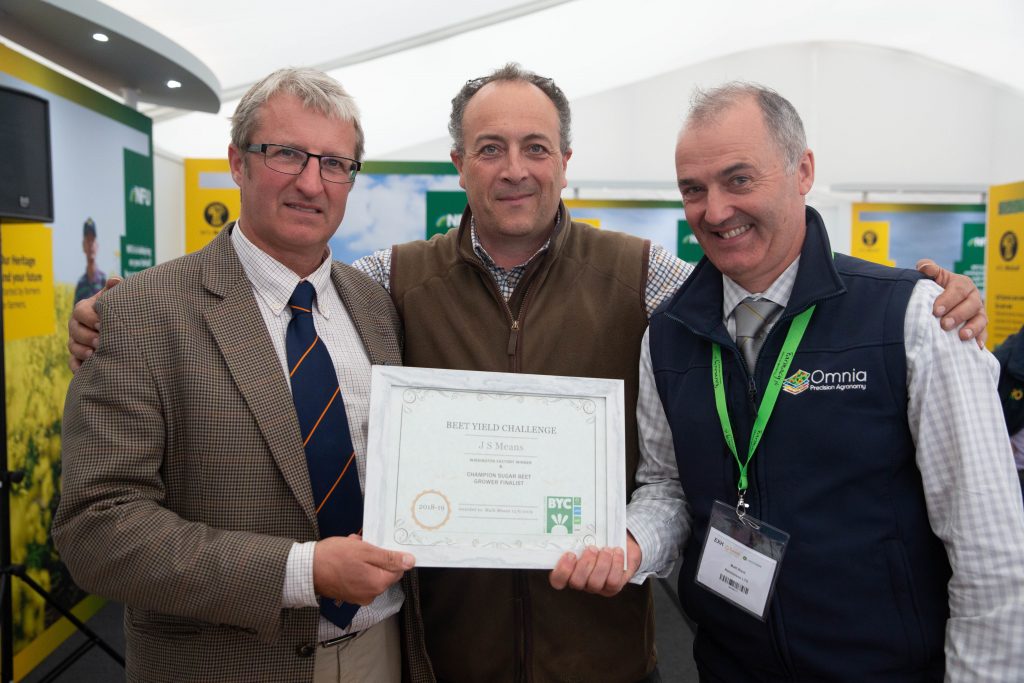A tough year for beet – CPM – Rob Jack, Peter Riley
The dry spring and exceptional aphid pressure have caused headaches for many sugar beet growers ...
CPM examines how this might affect harvesting schedules and what lessons can be learned for next season.
The term ‘challenging’ has been somewhat overused during 2020, but for good reason. It has been something of a perfect storm for sugar beet as the dry spring compromised establishment and residual herbicide efficacy on many farms, especially those without irrigation capacity.
This late, variable, establishment coincided with exceptionally high aphid pressure from March through to June, resulting in some of the most significant virus infection in recent years. Travel around any major beet growing area and it doesn’t take long to find leaves with the tell-tale yellowing resulting from aphid-borne virus infection.
Yield losses from the three yellowing viruses, mainly spread by Myzus persicae, can range from 30-50% but it remains to be seen how much crops will be affected this year. Growers will hope favourable summer/early autumn growing conditions can mitigate some of the impact, but variability looks inevitable.
Healthy beet
East Anglian Farmacy agronomist Rob Jack says that, as in any season, the priority this harvest will be to lift lower yield potential crops first, leaving better crops to build yield as, weather permitting, healthy beet should keep growing well into Nov or Dec. On farms where weeds such as fat hen have escaped herbicide programmes, he doesn’t expect it to cause too many problems at harvest as modern machines can cope with such weeds reasonably well.
As mild, wet winters and dry springs become more common, this year’s situation may well be repeated, while protecting crops becomes more challenging with the loss of key actives. Some growers are understandably questioning the economic viability of growing beet under such conditions, but for those that continue with the crop, Rob says the focus must be on optimising establishment; a process that begins with careful soil preparation in autumn.
On many farms, particularly those with heavier-bodied soils, he recommends conducting primary and secondary cultivations in autumn when soil conditions are favourable, meaning only minimal disturbance is needed before drilling. This conserves moisture and benefits establishment.
“Avoid working land too much, which may increase the risk of slumping or capping, and avoid cultivations once soils turn wet which risks creating issues with compaction. The big problem for many growers this spring and last, occurred where land needed two or three passes in spring to create a seedbed, which left no moisture in the seeding zone.”
This led to uneven emergence, and slow, variable establishment, putting young plants at higher risk when aphids appeared and complicated herbicide programmes as preferred products, rates and intervals had to be amended in some situations, he explains.
“Fortunately, the majority of my growers managed to conserve seedbed moisture and achieve even establishment so didn’t have to manage such variable growth stages, but it wasn’t the case everywhere.”
Soil moisture is key to maximising residual herbicide efficacy, and Norfolk-based Farmacy agronomist Peter Riley notes that of the post-emergence treatments applied this year, 58% were principally residual chemistry, with 42% of materials contact-acting, amplifying the difficulty of weed control in very dry conditions.

Peter Riley, agronomist
Extra challenge
The loss of desmedipham poses a significant extra challenge next year, as it has been a mainstay of beet herbicide programmes and is particularly effective in cooler, dry conditions often seen in early spring, he highlights.
“Many growers will have to rethink weed control strategies and are likely put more emphasis on pre-emergence material rather than post-ems,” he says. Desmedipham alternatives may not be as effective in cool, dry conditions, or may have to be applied at higher rates to achieve comparable control, which increases the risk of crop effects.
“Weeds must be tackled when they’re small to minimise the impact on yield. Next year we may well see more frequent applications, which means greater cost.”
Rob agrees that precise application timeliness will be even more important next year to maximise weed control and minimise crops risks. Establishing a strong, uniform plant stand as quickly as possible after drilling is also key to mitigating future risks from aphids and he recommends growers target a slightly higher plant population of 110,000 plants/ha.
Sugar beet is most vulnerable to virus yellows infection from the seedling stage up until around 12-leaves (typically 12-13 weeks after germination), when adult plant resistance develops. Frequent monitoring and prompt action are vital, he says.
Aphid pressure
Although this year’s unprecedented aphid pressure meant numbers quickly increased soon after treatment, he suggests some growers may have been caught out by how early aphids initially appeared, meaning that in a few situations the first sprays could have been applied 7-10 days late.
Close crop inspection, at least twice weekly, and spraying as soon as treatment threshold is reached is the best way to minimise virus risks, although he acknowledges it can be a tricky balance. “We often find isolated pockets of aphids exceed the treatment threshold when the field average does not.
“We can’t treat whole fields on the basis of one small area, so it’s almost inevitable that without neonicotinoid seed treatments and until resistant varieties are available, we may have to live with some small localised patches of virus transmission occurring before fields reach the treatment threshold.”
While two sprays may be sufficient in ‘normal’ years, it will be necessary to extend protection with a third spray in high risk seasons like 2020, he adds.
Control options are becoming increasingly limited, without key products such as Biscaya (thiacloprid), which along with Insyst (acetamiprid) were granted emergency authorisation for use this year. The ban on sales of thiacloprid-containing products came into effect on 3 August, with a final use up-date of 3 February 2021 and it remains to be seen what emergency approvals may be granted in 2021.
“A cold winter will reduce aphid pressure, but if we get another mild, wet winter and early influx as occurred this season, we could be facing an even more difficult situation next year,” notes Peter.
“Growers have to do all they can to make sure land going into beet is in as good a condition as possible to promote strong early establishment and help crops get to a good growth stage before aphid numbers increase.”

Mark Means, former Beet Yield Challenge winner (centre)
The risks from virus-transmitting aphids are proving too great for Norfolk grower and former Beet Yield Challenge winner Mark Means, near King’s Lynn.
He plans to cut his beet area from 110ha this year to just 40ha, or potentially zero, next season, putting much of the land into second wheat instead. Some fields will go into legumes, while low-yielding areas will be entered into Countryside Stewardship options to improve overall efficiency of remaining cropped areas.
“We’ve done everything we can to protect the beet crop this year, with three well-timed sprays, at an additional cost of £2/t for the neonicotinoids. But that cost does not include any yield loss and we’ve still seen virus come in. The lack of winter frosts followed by warm, dry conditions was just a perfect storm for aphids. Conservatively, I estimate we could see a 25% reduction in yield, so where we were hoping for 90t/ha, we could be down to 65t/ha.”
But Mark hopes the much-anticipated arrival of virus-resistant beet varieties – possibly within the next two or three years – could allow him to increase the sugar beet area again in future.
“Meanwhile, British Sugar has to be paying at least £25-26/t for people to even consider growing beet next year. For us, why should we go through this again when there are other options?”